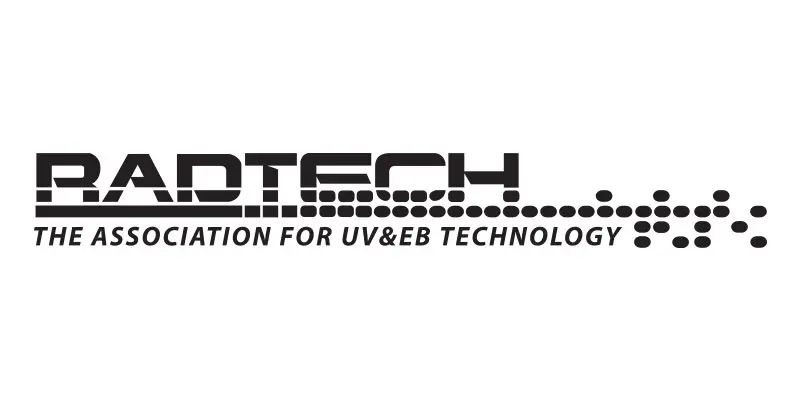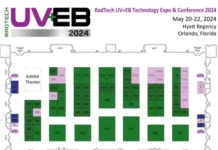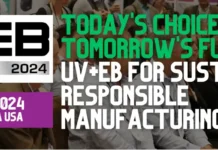RadTech International North America
RadTech Call for Papers Open
RadTech International North America is accepting abstracts for next year’s RadTech UV+EB Technology Conference & Exposition, scheduled for May 10 through 12, 2022, at the Hyatt Regency Orlando in Orlando, Florida. This will be an in-person conference, and RadTech will follow the latest guidance on health and safety practices.
Successful submissions will be high quality technical papers that discuss advances in LED technology, additive manufacturing/3D printing, electron beam, coatings, materials, adhesives, inks, formulation, chemistry, equipment, testing and more. Technical papers should be no longer than 25 minutes to present, with five minutes for Q&A. The online Abstract Submission Form is available now at www.radtech2022.com. Descriptions should be sufficiently comprehensive to allow assessment of the paper’s scope and content. Speakers will be notified by November 2021. More information and a complete list of suggested topics is available at https://www.radtech2022.com/call-for-papers/. Additional questions may be emailed to Mickey Fortune (mickey@radtech.org) or call 240.643.0517.
Fall Member Meeting Set for October 4
 The RadTech Fall Member Meeting has been set for Monday, October 4, at Florida’s Hyatt Regency Orlando. The one-day program will include a tour of the hotel and preview of RadTech 2022, a guest speaker, afternoon reception and updates on 3D printing, application support, EHS, sustainability, printing and packaging, and automotive/transportation initiatives. For more information, visit https://radtech.org/more-calendar-of-events/item/152-radtech-fall-meeting-2021.
The RadTech Fall Member Meeting has been set for Monday, October 4, at Florida’s Hyatt Regency Orlando. The one-day program will include a tour of the hotel and preview of RadTech 2022, a guest speaker, afternoon reception and updates on 3D printing, application support, EHS, sustainability, printing and packaging, and automotive/transportation initiatives. For more information, visit https://radtech.org/more-calendar-of-events/item/152-radtech-fall-meeting-2021.
RadTech Sustainability Committee Sets Priorities
In a meeting held May 20, RadTech’s Sustainability Committee set a series of priorities and created a proposed list of committee members who will serve as the group’s key contacts on the topic. During the meeting, the committee’s co-chairs, David Biro of Sun Chemical and Todd Fayne of PepsiCo, acted on information gleaned in a recent survey of sustainability-interested parties in the UV/EB community. As priorities, the group will focus on quantifying the environmental benefits of UV/EB to address market pressures to improve the recyclability of printed packaging (especially on plastic substrates) and investigate packaging redesigns (particularly with mono-material packaging) that offer new opportunities in UV/EB. Further, the committee will explore whether UV/EB inks and coatings will biodegrade or disintegrate over time – an issue related to recent concern over micro-plastics. Finally, the committee discussed how it can stay abreast of topics related to the sustainability of packaging and will serve as a partner, adviser or monitor of a handful of groups studying this topic. Interest in sustainability of packaging is very high, and RadTech is working to be a key part of that discussion.
IUVA releases white paper on Far UV-C Radiation
The International Ultraviolet Association (IUVA) has released a white paper titled “Far UV-C Radiation: Current State-of Knowledge,” which is a scientific review of Far UV-C technology and the research featuring key conclusions made through analysis of published literature and collation of expert knowledge. The paper can be downloaded at: https://iuva.org/resources/covid-19/Far%20UV-C%20Radiation-%20Current%20State-of%20Knowledge.pdf.
Thought Leader Series Continues with Webinars
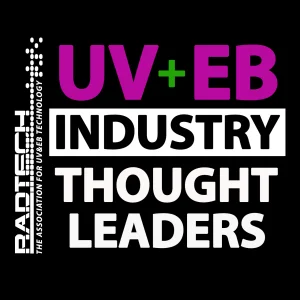 RadTech has continued its series of webinars with the most recent entries focused on antimicrobial and antiviral coatings, developments in vat photopolymerization in automotive production, 3D microfabrication in aerospace UV-curable coatings, challenges/opportunities in UV curing, and additive manufacturing materials in biomedicine. For more information or to see videos of past webinars, see https://radtech.org/education/thought-leader-webinars-new.
RadTech has continued its series of webinars with the most recent entries focused on antimicrobial and antiviral coatings, developments in vat photopolymerization in automotive production, 3D microfabrication in aerospace UV-curable coatings, challenges/opportunities in UV curing, and additive manufacturing materials in biomedicine. For more information or to see videos of past webinars, see https://radtech.org/education/thought-leader-webinars-new.
RadTech YP Committee Member Highlight
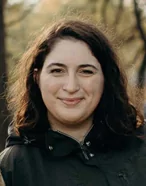 Hannah Jackson is a research chemist working at INX International’s Research and Development center in West Chicago, Illinois. Her work focuses on formulating UV/EB inkjet inks for digital applications. She received her B.S. in biology and M.S. in chemistry from the University of Michigan. Outside of work, she enjoys cooking, painting and hiking.
Hannah Jackson is a research chemist working at INX International’s Research and Development center in West Chicago, Illinois. Her work focuses on formulating UV/EB inkjet inks for digital applications. She received her B.S. in biology and M.S. in chemistry from the University of Michigan. Outside of work, she enjoys cooking, painting and hiking.
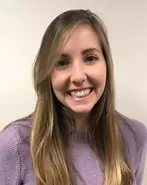 Vivien Clayton is a business development engineer at Sartomer Americas focusing on new market developments, especially within graphic arts and coatings markets. Before Sartomer, she spent two years at Penn Color developing pigmented inks for inkjet printing. She has a background in chemistry, with a focus on inorganic chemistry.
Vivien Clayton is a business development engineer at Sartomer Americas focusing on new market developments, especially within graphic arts and coatings markets. Before Sartomer, she spent two years at Penn Color developing pigmented inks for inkjet printing. She has a background in chemistry, with a focus on inorganic chemistry.
What is your background, and what projects are you working on now?
HJ: I got my bachelor’s degree in biology and then, while at my first job working in UV ink, I got my master’s degree in chemistry. Now I work on INX International’s digital inkjet team. My work involves formulating new inks and related products, troubleshooting issues with existing products, and communicating data and the conclusions of testing.
VC: I started in the industry at Evonik working with motor oil additives. I then transitioned to Penn Color, where I did water-based inkjet inks for textiles. I now have been with Sartomer for two years; currently, I have been transitioning from doing bench chemistry to the business development side.
What will change about UV/EB technology over the next five years?
HJ: I think digital ink technology will continue to grow. I think we will see expansion in its use and applications due to more high-performance technology and flexibility to meet customer needs. I also think the increase of e-commerce will lead to more growth in packaging design.
VC: I think continuous progress has been made in the digital world. In fact, in my opinion, that’s what I see as the biggest progress in almost all industries. It’s exciting to be kind of on the front end of this because it’s been talked about for years and years, but this is really where we’re starting to see that transition happens.
What challenges have you experienced as a young professional?
HJ: I feel like [as a young professional] learning how to communicate, asking questions and guiding your own learning [could be challenging] because your learning is a lot more guided for you in school. Now you have to take a lot more initiative to communicate and connect with people. I am a shy person generally, so I had to step out of my comfort zone and talk to people, mostly people I work closely with, about their early career experience and try to learn from that.
VC: I would say the biggest challenge for me is the transition from chemistry to business and just learning the differences between the two sides. In the lab, things are very direct, and you have a list of what you have to do. Then over on the business side, the to-do list is a little ambiguous. So, trying to train your mindset from the bench to the businesses, that was the biggest challenge for me.
How do we encourage more young professionals to get involved in UV/EB technology?
HJ: When I was in school, I used to go to a lot of events, such as recruiting events. I feel like if there was some way to put on events at universities and chemistry departments or other related departments, that would be a great way to reach future young professionals. I also think that now virtual events which connect students and young professionals with seasoned people in the UV/EB industry would help make more people aware of the wide horizons of this industry.
VC: I think the biggest way to encourage young professionals is to make our industry more widely known, which can include attending conferences, collaborating with universities, etc. At RadTech conferences, there are a lot of students presenting. So maybe hosting an event [at the conferences] with all of them as a young professional group would be helpful.
The RadTech YP Committee aims to stimulate young professionals’ (YPs) growth in the use and development of UV and EB technology by enhancing interactions among YPs and senior experts within RadTech. YPs are students and professionals early in their careers who utilize UV or EB technology in industry, government or academia. For questions or get involved, contact yp@radtech.org.



